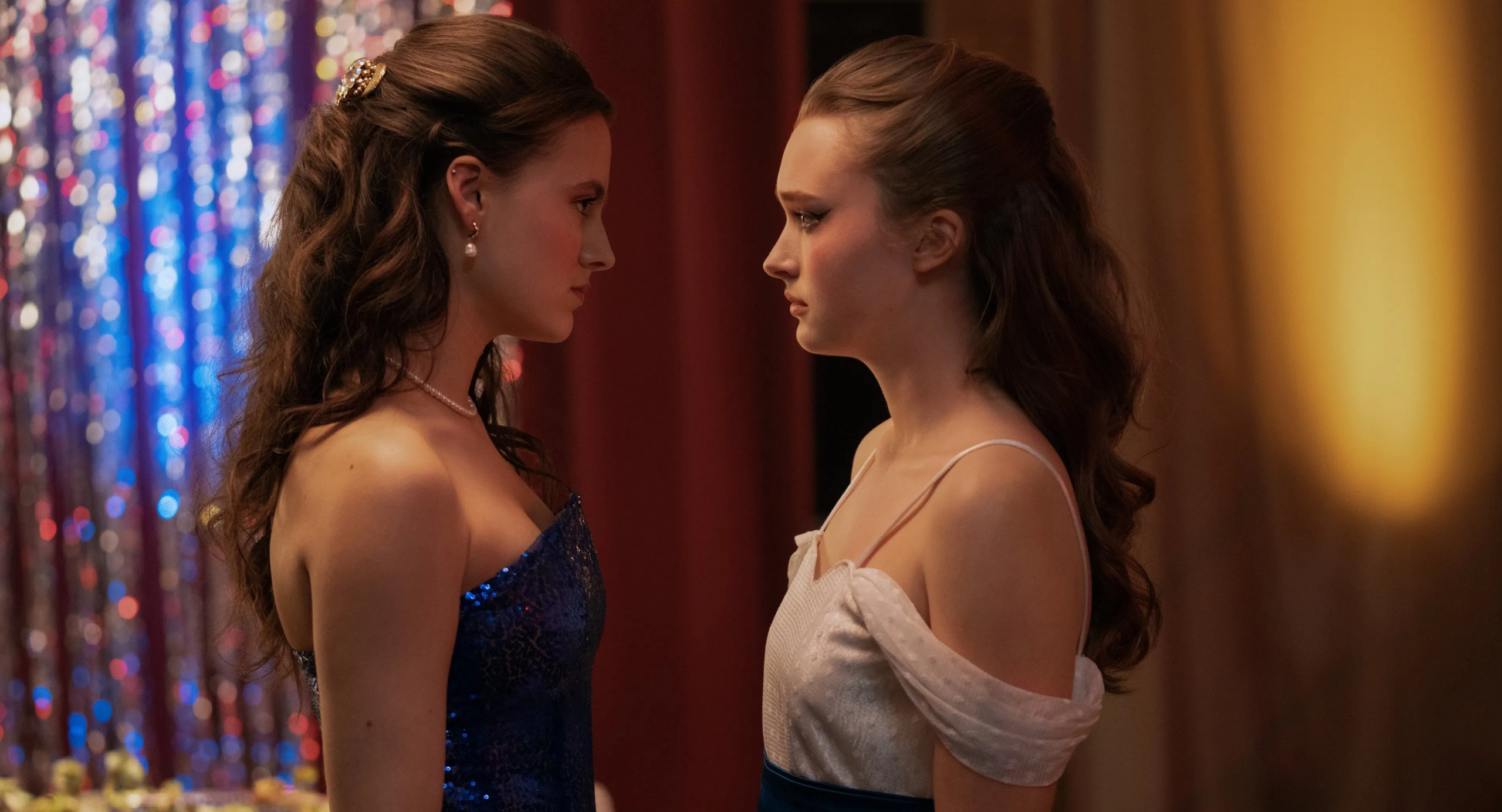Fear Street: Prom Queen – Film Review
Published May 25, 2025

As a devoted fan of the Fear Street trilogy—a trilogy that delivered a fresh, blood-soaked revival of R.L. Stine’s teen horror for a new generation—I approached Fear Street: Prom Queen with genuine anticipation. The 2021 Netflix trilogy (1994, 1978, and 1666) struck a rare balance of nostalgic reverence and inventive horror storytelling. So, it’s with a heavy heart—and mounting frustration—that I tell you that this latest entry is a major disappointment. While Prom Queen flaunts vintage vibes, stylized murder sequences, and a high school dance drenched in blood and drama, it ultimately squanders its potential in favor of lazy twists, shallow characters, and, most egregiously, a complete mishandling of the lore that once made this franchise feel like more than just another slasher cash-in.
Directed by Matt Palmer and co-written with Donald McLeary, this fourth installment is based (loosely) on the 1992 Fear Street book The Prom Queen. Set in 1988 Shadyside, the story should have been fertile ground for expanding the town’s cursed mythology while delivering the thrills expected from a high-stakes prom-night massacre. Instead, it feels oddly sanitized and detached from the gritty, cursed heart of what came before.
India Fowler stars as Lori Granger, a moody, semi-outcast teen with a dark family history and aspirations to win prom queen against the reigning high school elite—a vicious clique dubbed the “Wolfpack.” While the setup leans into classic teen-slasher territory (complete with cruel bullies, creepy authority figures, and whispered rumors of past murders), the film never quite commits to either suspense or satire. The kills are frequent, yes—but mostly uninspired. Characters are introduced just to be dispatched, and the deaths lack the creativity or punch of 1994’s grocery store shocker or 1978’s axe-heavy carnage. It all feels like a pale imitation of what made the earlier entries so gleefully brutal and memorable.
The film’s attempt to play with whodunnit mechanics doesn’t fare much better. It juggles red herrings and suspicious glances with all the subtlety of a sledgehammer. The screenplay tries to build paranoia around Lori’s classmates and school staff, including Vice Principal Brekenridge and his unsettling son, but the eventual reveals feel disconnected and implausible, even within the heightened world of Fear Street. By the time the killer is unmasked (and unmasked again), the narrative logic is stretched so thin it snaps, leaving behind a finale that feels more like a cheat than a chilling twist.
The biggest betrayal, however, is the film’s handling of Fear Street’s central mythology. In the original trilogy, the sinister history of Shadyside, the witch Sarah Fier, and the idea of generational curses felt deeply woven into the town’s identity. Prom Queen barely acknowledges this lore, and when it does—especially in the final act—it does so in such a slapdash, confusing way that it retroactively damages the groundwork laid by the earlier films. A late reveal involving a familiar supernatural symbol is clearly meant to be ominous, but it comes off as hollow fan service rather than a meaningful expansion of the series’ mythology.
Performance-wise, the cast does their best with material that rarely rises above generic. India Fowler brings a quiet intensity to Lori, but the script burdens her with too many clunky lines and predictable emotional beats. Suzanna Son injects some much-needed energy as Lori’s best friend Megan, a rebellious skeptic whose arc teeters on interesting before being sidelined. Fina Strazza, meanwhile, leans hard into her role as queen bee Tiffany, but the character’s cartoonish villainy prevents any nuance from emerging. Chris Klein, Lili Taylor, and Katherine Waterston add name recognition to the adult ensemble, but their roles are so thinly written that none make a lasting impact.
Visually, Palmer captures the era well—at least in terms of wardrobe and soundtrack. The 1988 setting allows for fun prom aesthetics, synth flourishes, and feathered hair galore. But while the production design nails the period, the cinematography often feels flat and the editing curiously restrained, especially during moments that demand more intensity or rhythm. It’s as though the film is afraid to get truly messy—something the previous entries embraced with gory glee.
One of the most disappointing aspects is the film’s inconsistent tone. While the Fear Street trilogy masterfully toggled between horror, dark comedy, and coming-of-age drama, Prom Queen never decides what it wants to be. It flirts with camp but pulls back. It tries for pathos, but the emotional stakes are undermined by a shallow script and rushed pacing. Even the prom itself, which should have been the crescendo of tension and carnage, comes off more like a checklist of slasher clichés than a moment of true narrative or stylistic climax.
As a standalone slasher, Fear Street: Prom Queen is serviceable at best. As a continuation of a beloved franchise, it’s a significant misstep. The film not only lacks the heart and edge that made the trilogy sing, but actively undermines the series’ lore with careless mythology tweaks and uninspired storytelling. Instead of deepening the Fear Street world, it flattens it into something disappointingly ordinary.
There are glimmers of promise—a strong central performance here, a stylish kill there—but they’re fleeting. A franchise that once felt bold, weird, and wildly entertaining now feels like it’s being run through a factory line. If Prom Queen is any indication of the series’ new direction, fans of the original trilogy have every right to be concerned.
For diehard Fear Street fans like myself, Prom Queen is a painful letdown. It offers neither the inventive slasher thrills of the previous films nor the rich mythology that made Shadyside such a compelling place to revisit. What should have been a triumphant prom night ends up feeling more like a ghost of the franchise’s former self—a glittery, bloody mess with no soul beneath the mask.
